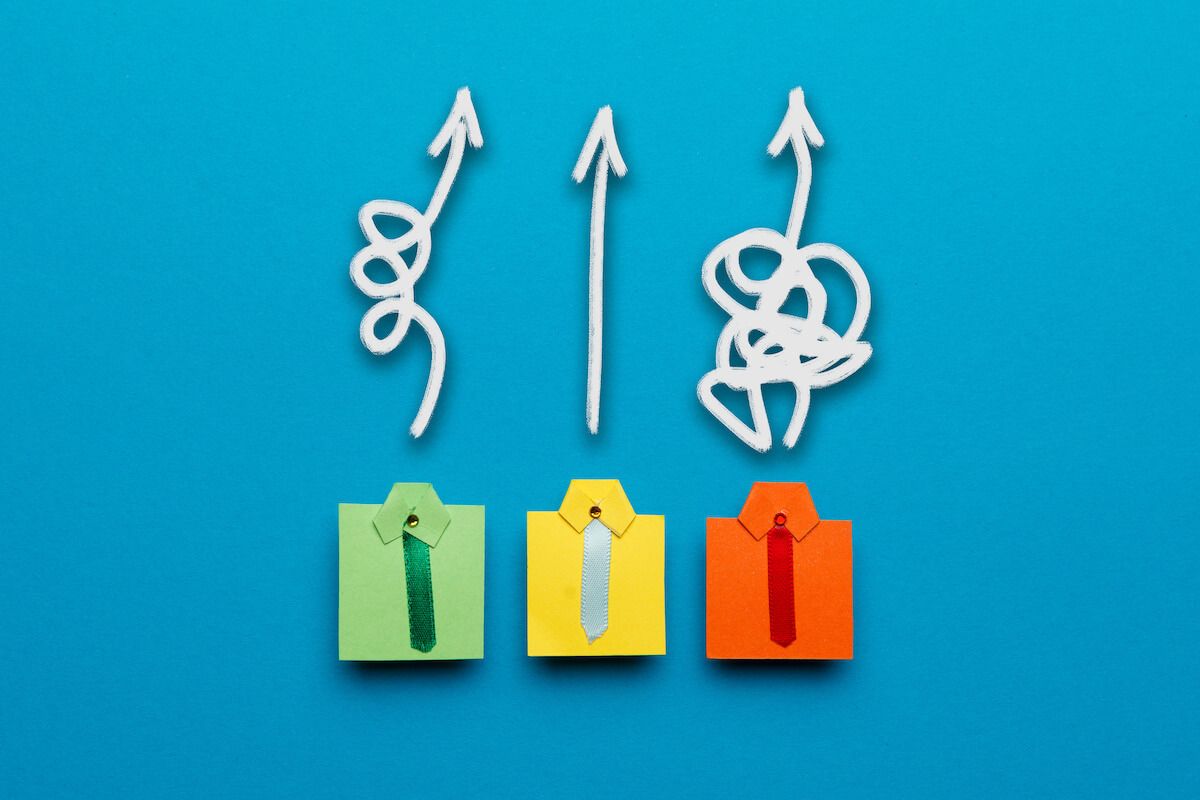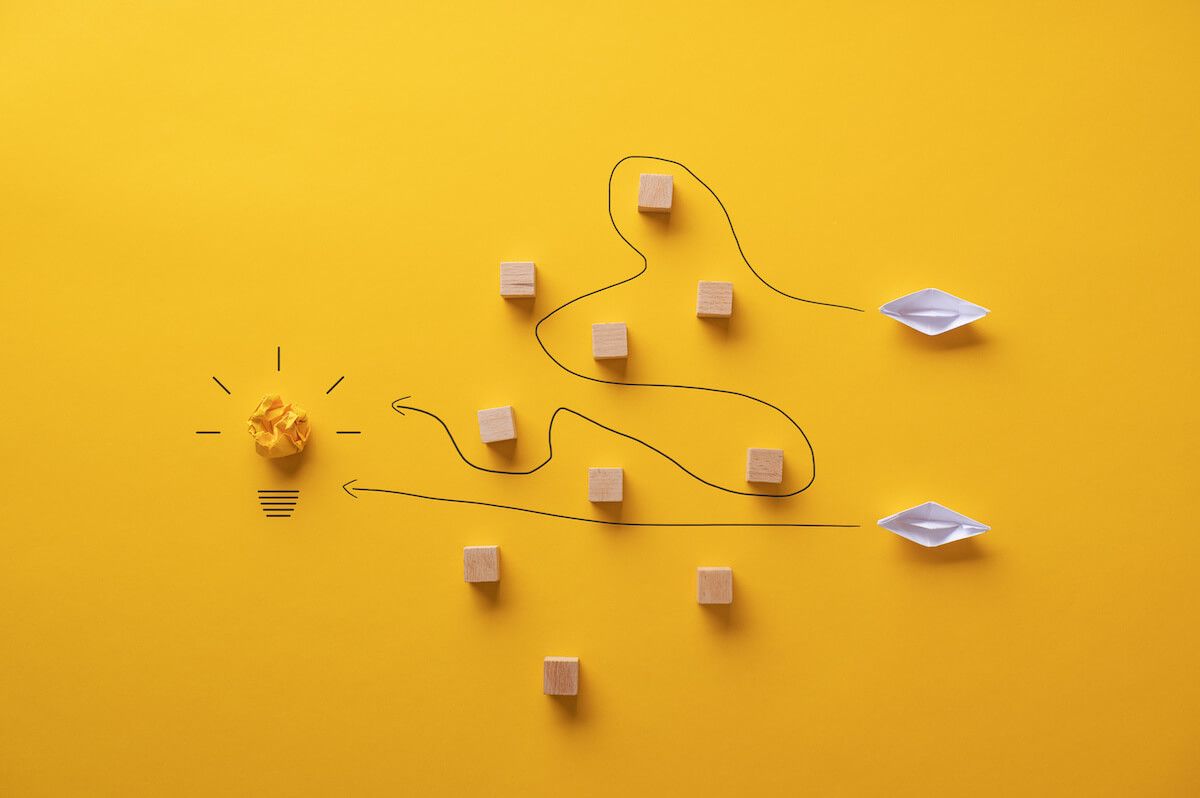A never-ending to-do list, constant interruptions, and a mountain of emails to get through. These are just a few of the many challenges the modern worker faces. Trying to get through a day can feel like swimming against the current, leaving you exhausted yet feeling like you haven't accomplished anything.
Efficiency is one of the essential keys to surviving and thriving in today's work environment. Many mistake efficiency for working faster and harder, but it's not about overtime and multitasking. It's about finding ways to improve your workflow, better manage your time and resources, and boost the quality of your output.
So how can you improve efficiency while juggling multiple tasks? Let’s explore 13 simple tips, tricks, and tools to help you increase productivity and achieve your goals.

Efficiency is a concept that is commonly misunderstood. Often, people think it means working harder, faster, and longer. However, efficiency is actually about being strategic with your time and resources to work smarter, not harder. It's about maximizing your output while minimizing work hours and effort.
In the workplace, efficiency means focusing on the work that adds the most value. Often, we get caught up in busy work that makes us feel productive but doesn't accomplish anything at the end of the day. By prioritizing tasks, setting goals, and managing your time well, you can stop wasting time and improve your quality of work.
In addition to prioritizing tasks and managing your time, working efficiently also involves leveraging technology to automate mundane tasks and improve collaboration with your team. Technology can save time, increase accuracy, and ensure everyone is aligned on shared project goals.
The workplace is full of factors that can either improve or hinder our work efficiency. From the tools and technology we use to our habits and work environment, the way we use our time is significantly impacted by a number of variables. By identifying and understanding these influences, we can make informed decisions to streamline our workflow and get more out of the workday.
Some of the most common factors that impact efficiency in the workplace include:
These are just a few factors that can help you be more efficient. Examining these areas and making small changes can greatly impact your productivity.

Improving efficiency has numerous advantages that can benefit both you and your organization. You'll achieve better results with less effort as your work efficiency increases. Likewise, the bottom line will benefit from business efficiency if employee productivity increases overall.
You can expect the following benefits when you focus on streamlining your tasks and optimizing your workflow:
Overall, improving efficiency gives you the tools to maximize productivity and performance. In addition to the numerous benefits, it can also improve morale and boost motivation – making it a valuable skill for any individual and successful business.

The key to improving work efficiency is analyzing your current workflow, identifying areas where improvements can be made, and taking steps to improve them. With a strategic approach, you can get the most out of your day. Try these 13 tips to improve efficiency and enjoy your work.
According to the Pareto Principle, also referred to as the 80-20 rule, 80% of your results come from 20% of your effort. This means that a small number of your tasks are likely having a disproportionate impact on your work efficiency. By identifying the most important tasks and focusing on them first, you can make more significant progress quickly.
It may seem like you're getting more done by doing several things at once, but in reality, you're just exhausting yourself — multitasking decreases productivity. Rather than multitasking, try to concentrate on one thing at a time. Consider task batching, the Pomodoro technique, or other time management method to help you focus.
Many tasks can be automated, freeing your time for more important things. For example, you can use tools like IFTTT or Zapier to automate your social media or email marketing. Meanwhile, a tool like Hootsuite can help you schedule your social media posts in advance. By automating repetitive or time-consuming tasks, you can optimize your workflow and give enough time to high-value work.
A project management tool can help you stay organized and on track with your tasks. Many options are available, such as Trello or Asana. These tools allow you to create to-do lists, assign tasks to team members, and track project timelines. Many project management tools also have apps to use on the go, affordable pricing, and templates to help you get started.
Culture and morale have a massive impact on efficiency. Happy and motivated team members can improve productivity and make work more enjoyable for everyone. Make sure you're contributing to a positive work environment by supporting your colleagues, thanking them for their hard work, and taking the time to recognize their achievements.
In addition to contributing to the overall work environment, optimizing your individual workspace is also important. Creating a workspace personalized to your specific workflow and needs can make your work day go much smoother. This could include decluttering your desk, organizing your information, or investing in ergonomic equipment.
Meetings can be a major time sink, especially if they're not well-planned or focused. Before scheduling a meeting, ask yourself if it's necessary and if there are alternative ways to communicate. Sometimes a quick phone call or Slack message to a team member is all that's needed. If a meeting is necessary, have a clear agenda and stick to it.

One of the best ways to identify areas for improvement is to track how you spend the hours in your work day. There are many time management tools available for this, such as Toggl or Rize. By tracking your time, you can see where you're spending the most work hours and identify areas to increase efficiency.
Maintaining motivation and staying on track can be easier by having someone hold you accountable. This could be a team member, a mentor, or a coach. Whether it's a quick email at the end of the day or a weekly get-together in person, having someone to check in with can help you stay focused and progress toward your goals.
Emails can be a significant distraction, especially if you're constantly checking your inbox. Keep the amount of time you spend checking emails to a minimum. Consider task batching to set aside specific times to check your inbox or use tools to block emails during certain hours. Just try to avoid checking them in real time as they arrive.
Email isn't the only distraction in the workplace — social media, phone notifications, or interruptions from team members can also derail the flow state and reduce efficiency. It's essential to identify and eliminate as many distractions as possible. This might mean turning off your phone until the end of the day or using a tool like Freedom to block distracting websites.
While taking frequent breaks may appear counterintuitive, it can actually increase productivity. Our minds can only focus for so long, so stepping away for a few moments throughout the workday can help improve cognitive processes and reduce fatigue. Take a walk, drink some water, or take a few moments for mindfulness activities like deep breathing or stretching.
It's important to relax and recharge outside of work. Whether going for a walk, practicing mindfulness, or spending time with loved ones, it's important to unwind at the end of the day. This can help reduce stress and improve your overall well-being.
Improving efficiency can positively impact your work and personal life. By streamlining your tasks, eliminating distractions, and finding tools and strategies that work for you, you can get more out of your workday and achieve your goals. Experiment and try different approaches — what works for one person might not work for another. The key is to find what works best for you and stick with it.
I hope you have enjoyed reading this article. Feel free to share, recommend and connect 🙏
Connect with me on Twitter 👉 https://twitter.com/iamborisv
And follow Able's journey on Twitter: https://twitter.com/meet_able
And subscribe to our newsletter to read more valuable articles before it gets published on our blog.
Now we're building a Discord community of like-minded people, and we would be honoured and delighted to see you there.